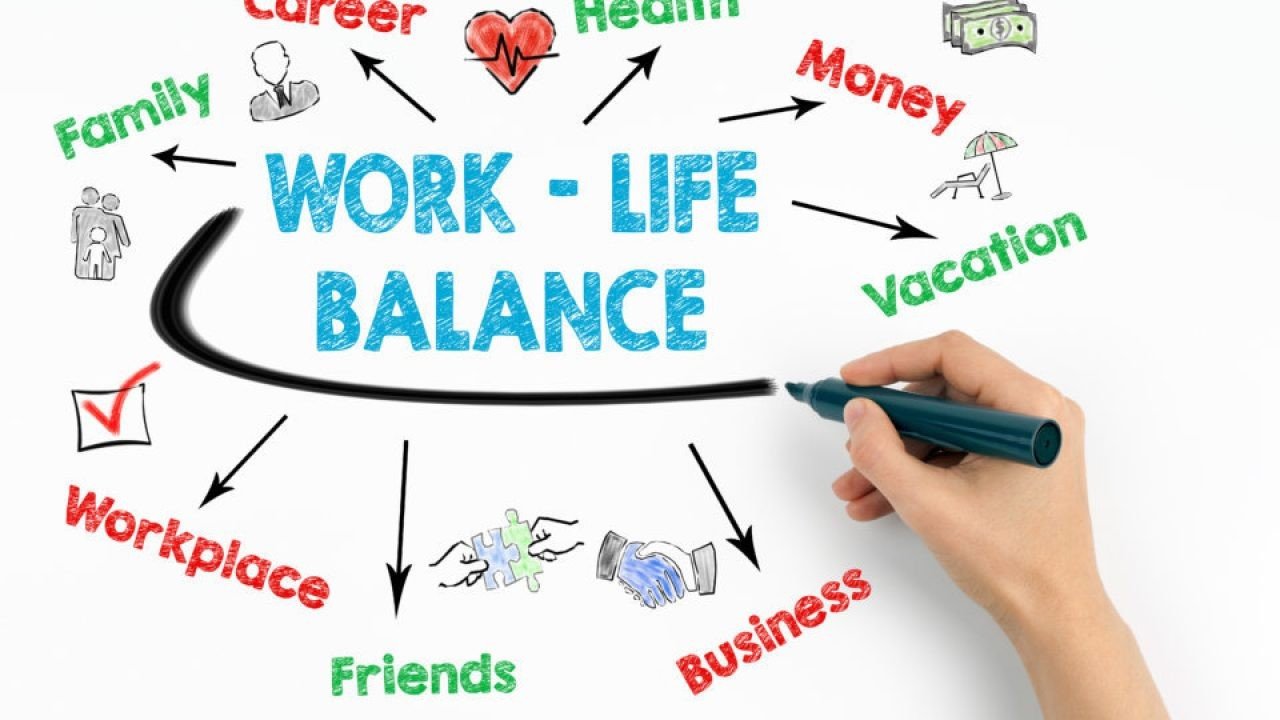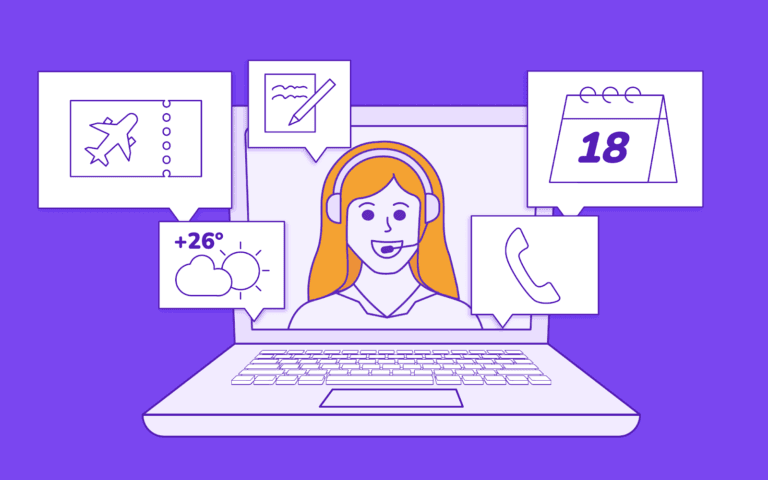Working from home can blur the line between home and office, making maintaining a healthy work-life balance difficult. It’s important to consider whether always being in your home office can lead to a constant sense of work and whether remote work can improve work-life balance.
Remote work offers greater flexibility and allows employees to balance work and personal responsibilities. However, this can also lead to increased pressure, as non-traditional hours or lack of FaceTime with teammates can lead to more time spent online. Remote workers may find themselves working additional hours and having less free time. To maintain a healthy work-life balance, it is essential to follow tips such as taking breaks, eating lunch, and leaving the office for the day. These tips can help both new and experienced remote workers maintain productivity while also allowing time for personal interests.
What is Work-life Balance?
Work-life balance is the balance between personal and professional activities, with work-related activities present at home. The ideal balance is subjective, with some arguing that happiness is defined as having little differentiation between professional and personal lives.

The rise of technology has blurred the professional and personal lines, making it easier for employees to be “permanently” at work. This has led to stress, a significant economic and health problem in the information economy. The debate over responsibility for ensuring employees have a good work-life balance is a key issue, with employers often feeling responsible for their employees’ health. Stressed employees are less productive and more likely to make errors.
The rise of remote work
The pandemic forced many companies to adopt remote work, with 40.9% of full-time employees working remotely or in a hybrid environment as of 2023. Both employees and employers favor remote work models due to benefits like reduced commuting time, greater control over working hours, and reduced overhead costs. 63% of employees preferred a more flexible work model post-pandemic. However, remote work also has challenges such as isolation, communication, and productivity issues. The following section outlines the challenges of remote work.
Do You Have a Good Work-Life Balance?
It’s simple to become mired in your daily routine and fail to see that an excessive amount of your time is being consumed by your work. On the other hand, the symptoms of a bad work-life balance might become rather obvious if you pay close attention. Among them include putting off taking care of your health, working extra hours frequently, being tense all the time, spending little to no time for yourself, and experiencing physical and mental tiredness.

The aforementioned factors can all have a big impact on your relationships with your loved ones. You won’t have time for friends and family if you don’t have a good work-life balance. Not to mention that whatever time you spend with them becomes meaningless if work is constantly on your mind. Therefore, by depending on your support network, you lose out on genuine opportunities to de-stress. It’s crucial to keep in mind that, even if you can always start working again tomorrow, nothing can replace the moments and experiences we miss out on with our loved ones.
Why Is Work-Life Harmony Vital?
Negative work-life balance has a detrimental effect on employees’ satisfaction and health. At work and in their personal life, they experience more stress and a decreased sense of control. People who manage their professional and personal lives well are frequently happier and less stressed. You’ll probably be more driven, and effective, and do better work when you’re happier.

The main justification given by remote workers for working remotely is a better work-life balance. They are free to set out their workday in a way that maximizes productivity, ensures that things are completed on time, and allows them to schedule activities outside of work.
How to Balance Work and Life
Setting priorities is the key to achieving work-life balance. You may manage your workday to finish the things on your to-do list more quickly by using productivity tactics, time management strategies, communication tools, and planning and scheduling. These work-life balance suggestions can help you maintain a positive working-personal connection.
Set a schedule, and try to stick to it
It might feel like you have to be online and available at all times when you have the freedom to work from any location. This flexibility can occasionally lead to a lack of work-life balance if your schedule differs from that of the rest of your team.

Try creating and adhering to a routine if you operate remotely. Your team and your feeling of work-life balance will benefit from this: Your team will be able to arrange personal activities throughout your day outside of work, get up and go to bed at the same time every day, and work a manageable number of hours if you do this. They will also know exactly when they can and cannot contact you.
It would be a good idea to adjust your working hours so that you are available during those times while also being careful of spending your time unwinding if there are recurring occurrences that need you to log on early or stay online later than those hours.
Use communication tools to indicate your online and offline hours
Use various means to disseminate the daily schedule you and your team have decided upon so that team members in various regions and time zones are aware of and considerate of that time.

Working from home can help you maintain a healthy work-life balance. For example, you can set your Slack availability to prevent notifications before or after a specific time of day, and you can set your Google Calendar working hours so that you automatically turn down events that fall outside of your daily routine. Additionally, if you make your working hours known, your colleagues will be more considerate of your time and may even set up a meeting or send you an email rather than bombarding you with Slacks at 1 a.m. or 2 a.m.
Use personal errands or activities to take breaks throughout the day
An advantage of working remotely is increased productivity. You may spend more time working on your tasks if you don’t have to commute, move about the workplace, or listen to office gossip. Nevertheless, the boredom and isolation of working remotely might occasionally make you feel alone and as though you don’t have a moment to yourself.

Alternatively, you may utilize personal errands as a method to break up your day and get a few minutes away from your computer or desk to help you balance work and life. This will allow you to take effective breaks from work and do personal duties, freeing up your time to engage in offline activities like cooking, exercising, or resting rather than racing about to run errands like you would if you were an office worker.
Make plans for your after-work hours to help balance work fatigue
Even after you’ve shut down your laptop and signed out, it might be difficult to leave work behind if your living area and workstation are in the same location. If you are working from home already, there may not seem to be a need to log off at a specific time.

Thus, if you’re a remote worker looking for a bit more balance between work and life, schedule your after-work activities and adhere to them. If you have something to do at the end of the workday, such as going to a fitness class or having drinks during happy hour, you’ll be more likely to sign off and stop working.
Eat a proper lunch
I used to work steps away from my fridge when I first started working from home, and I would graze on food throughout those days. Even though this was wonderful, it wasn’t always the best for my feeling of work-life balance or productivity.

When you work from home, you are not surrounded by coworkers or cafeterias to remind you to take a normal 30-minute or 1-hour lunch break in the middle of the day as you would be at an office. Whether you work from an office or home, you may make time for yourself around lunch so that you can properly break from work, eat, and refuel for the remainder of the day.
Work in a space that’s distinct from the rest of your home
Set up a room for work that is separate from the rest of your house. In keeping with being ready for a productive workday from home, you can also set yourself up for success by selecting the ideal workstation.

When compared to working in an office, working from home might be far more disruptive. One reason is that you’re alone yourself and don’t have any coworkers around to encourage you to keep active and productive. Additionally, there are more activities available at home than at the office. If you work from home, where you often spend lazy afternoons binge-watching your preferred true-crime series, you may find yourself sidetracked by midday. You may work instead of working if you work from your dining room table, which is covered in laundry that needs to be folded.
Don’t forget to socialize
A lot of the informal daily interactions that occur when everyone in the office works from home are lost, which can be depressing if you’re not used to working alone. While social interactions break up the day and give it a unique feel, isolation can make every day seem monotonous and repetitive, especially when all we do is work.

Talking to your coworkers a few times during the day will help you combat this. Take a video coffee break, chat about the shows you’re binge-watching, ask them about their weekend activities, check up on their family news, or just share a joke or meme. If you usually chat with them about a certain issue, keep it up. When working from home, these little exchanges greatly contribute to maintaining your work-life balance.
Being a remote worker means that juggling work and life is a constant process that calls for deliberate effort and strategy. Remote workers may attain a healthy work-life balance by defining boundaries, setting up a specific workstation, sticking to a schedule, controlling time and distractions, giving self-care priority, and preserving social ties. Additionally essential to succeeding in a remote work setting include utilizing technology, maintaining flexibility and adaptability, managing stress and burnout, and efficiently interacting with team members.
We’ve covered a lot of advice and techniques in this extensive guide to assist remote workers in striking a healthy balance between their home and work life. Remote workers may ensure their well-being and productivity while still enjoying the benefits of flexibility and independence by putting these strategies into practice.








